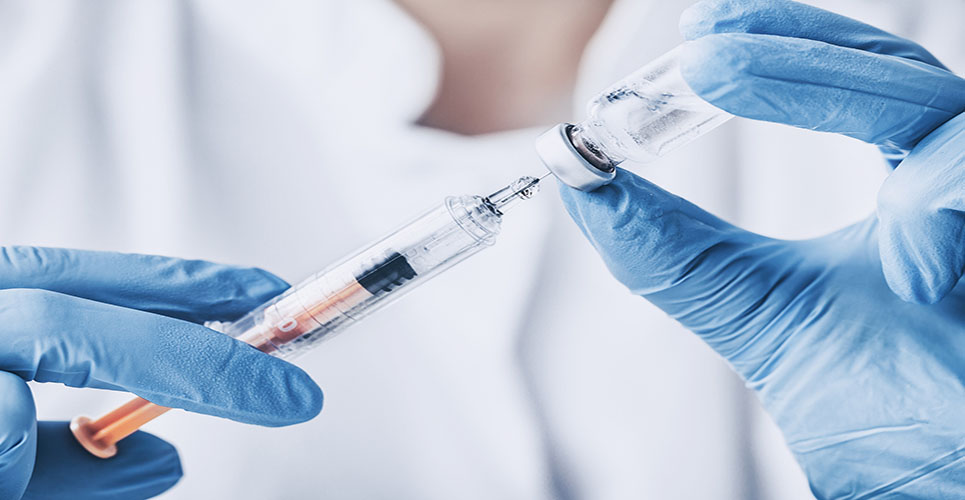Gardasil® (the quadrivalent or four-type Human Papilloma Virus vaccine) is now being used for routine HPV immunisation of girls aged 12-13 years in the UK to help prevent cervical cancer.
This switch from the bivalent vaccine (containing two HPV types) has come into practice this month following an announcement made by the Department of Health in November 2011 and Sanofi Pasteur MSD looks forward to building on the success of the national HPV immunisation programme which began in 2008 by also protecting against HPV-related diseases such as genital warts and vulval and vaginal pre-cancers. The national programme will continue to offer HPV vaccine, either via the schools programme or GP surgeries, to older girls (aged under 18 years), who have not already received the vaccine.
There are approximately 200 HPV types that infect humans(1) and many are now becoming recognised as major causes of cancers, including cervical cancer. Globally, 5% of all cancers are thought to be related to HPV.(2) HPV-related premalignant genital lesions (cervical, vulvar and vaginal), cervical cancer and genital warts caused by types 6, 11, 16 and 18 are increasingly seen as major public health concerns. Together these diseases constitute a significant economic burden for the NHS, exceeding £186M in treatment costs.(3,4)
Professor Margaret Stanley OBE, Professor of Epithelial Biology at the Department of Pathology, University of Cambridge, said: “The Department of Health’s decision to use the quadrivalent vaccine for the national immunisation programme is good news for our young women. Clinical studies have demonstrated that the quadrivalent vaccine provided protection against other HPV related diseases in particular vulvar and vaginal pre-cancer and genital warts.”
In clinical trials in females aged 16-26 years,(5) Gardasil has demonstrated:
- 97-100% reduction in HPV type 16 and 18-related cervical pre-cancers and cancers, specifically;
- HPV 16/18-related CIN* 2/3 or AIS : 98.2%†
- HPV 16/18-related AIS‡ : 100%§
- 100% efficacy preventing vulval** and vaginal†† pre-cancers (VIN‡‡ 2/3, VaIN§§ 2/3) caused by HPV types 6, 11, 16 and 18
- 99%*** efficacy preventing genital warts caused by HPV types 6, 11, 16 and 18
In clinical trials in men aged 16-26 years, the vaccine demonstrated 89%††† efficacy preventing genital warts caused by HPV types 6, 11, 16 and 18.

School nurses have been actively involved in delivering the national immunisation programme. They have helped to achieve a world-leading coverage rate for the three vaccine doses required to help protect against cervical cancer of around 80% across the UK and this is expected to continue.(6)
Gardasil is licensed in 123 countries with over 95 million doses distributed worldwide. Australia was the first country to fund an HPV vaccination programme for all women aged 12–26 years, using Gardasil®.(7) In the Victoria region, the incidence of cervical cancer precursors – high grade cervical abnormalities – in girls younger than 18 years, declined by almost 50% after introduction of the vaccination programme (from 0.80% to 0.42% (- 0·38% (95% CI 0·61–0·16)) among screened girls under the age of 18).(8)
Additionally, a national surveillance network demonstrated a reduction the burden of genital warts (incidence reduced by 59%‡‡‡ in young female residents eligible for vaccination).(7) After vaccination began, a decline in number of diagnoses of genital warts was noted for young female residents (59%, ptrend<0・0001). These declines were seen within two years of the start of the HPV vaccination programme. Further data from the Melbourne region, four years after the introduction of the national programme, support a continuing decline with an observed 90% reduction in all females less than 21 years of age.(9)
Interestingly, while only females were vaccinated, this surveillance also showed some benefit for boys with proportionally fewer heterosexual men less than 21 years of age diagnosed with genital warts during the vaccine period (genital warts declined by 90%§§§ in both women and heterosexual men). It is thought that the reduced carriage of HPV-types 6 and 11 in women may be producing protective herd immunity in heterosexual men.(9)
“To date, the Department of Health’s national HPV immunisation programme in schools has achieved one of the highest vaccine coverage rates for three HPV doses of any country in the world. We are committed to helping school nurses and other healthcare professionals to build upon this success with the four HPV-type vaccine which will help to protect against cervical cancer, cervical, vuvlar and vaginal pre-cancers and also genital warts,” said Richard Stubbins, Vice President of Sanofi Pasteur MSD.
Along with HPV vaccination, it is essential that young women continue to attend for smear tests (cervical screening) when requested by their GP. In this way, HPV vaccination and cervical screening is expected to have a significant impact on public health and reduce the treatment costs for these diseases in the UK over time.
- DeVilliers EM , Fauquet C, Broker TR. Classification of papillomaviruses. Virology 2004;324:17-27.
- Parkin DM and Bray F. The burden of HPV-related cancers. Vaccine 2006; 24 (Suppl 3): 11-25
- Brown RE et al. Costs of detection and treatment of cervical cancer,cervical dysplasia and genital warts in the UK. Current Medical Research and Opinion Vol. 22, No. , 2006, 663–670.
- Lanitis T. The cost of managing genital warts in the UK. International Journal of STD & AIDS 2012; 23: 189–194.
- Gardasil® Summary of Product Characteristics. http://www.medicines.org.uk/EMC/medicine/19016/SPC/GARDASIL/
- Human papillomavirus (HPV) immunisation programme maintains over 80% coverage amongst 12 year old girls http://www.hpa.org.uk/hpr/archives/2012/news1212.htm#hpvvp
- Donovan B, Franklin N, Guy R, et al. Quadrivalent Human Papillomavirus vaccination and trends in genital warts in Australia: analysis of national sentinel surveillance data. Lancet Infect Dis 2010;11(1):39-44.
- Brotherton JML , Fridman M, May CL. Early effect of the HPV vaccination programme on cervical abnormalities in Victoria, Australia: an ecological study. Lancet 2011; 377:2085-92.
- Read TRH , Hocking JS, Chen MY. The near disappearance of genital warts in young women 4 years after commencing a national human papillomavirus (HPV) vaccination programme Sex Transm Infect. 2011; 87:544-547.

